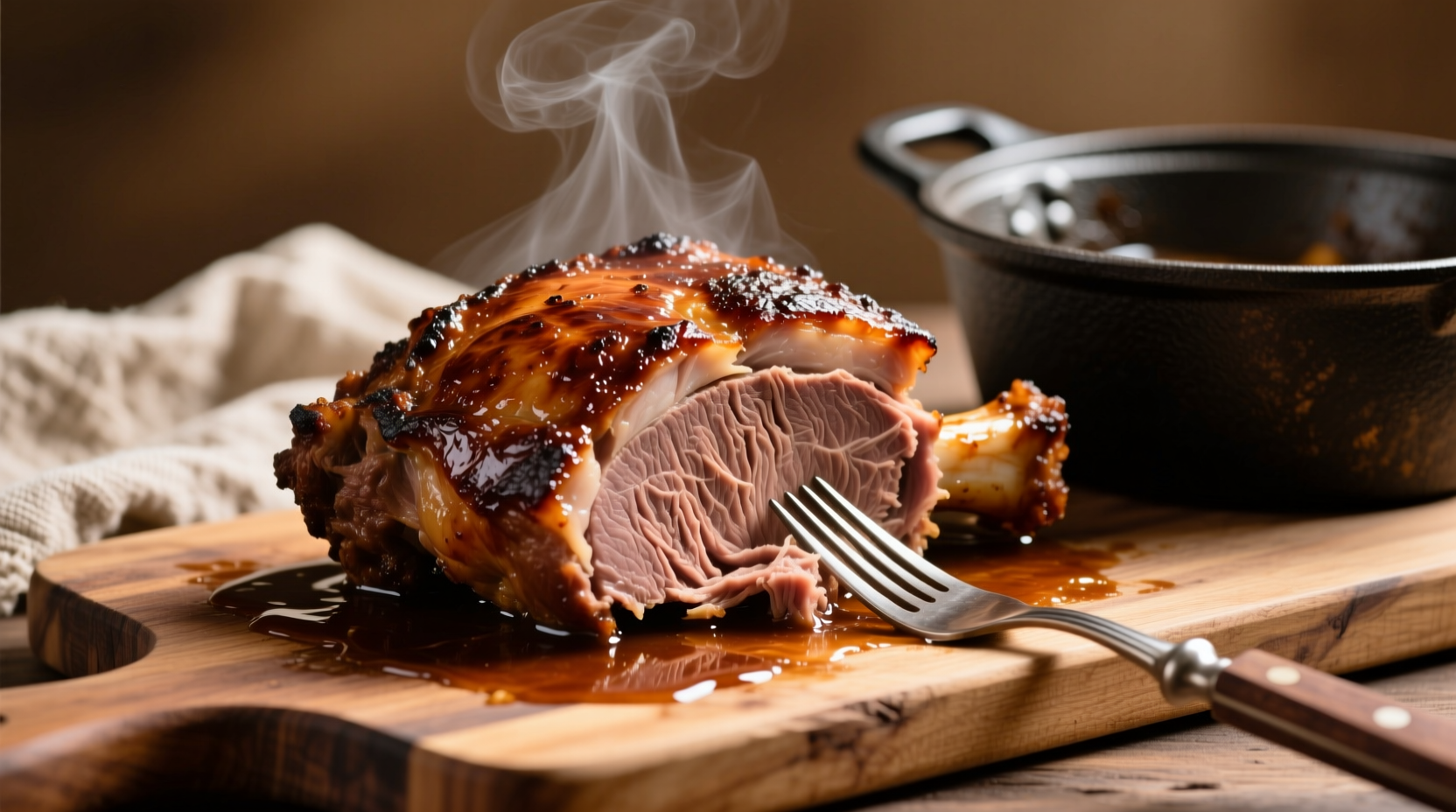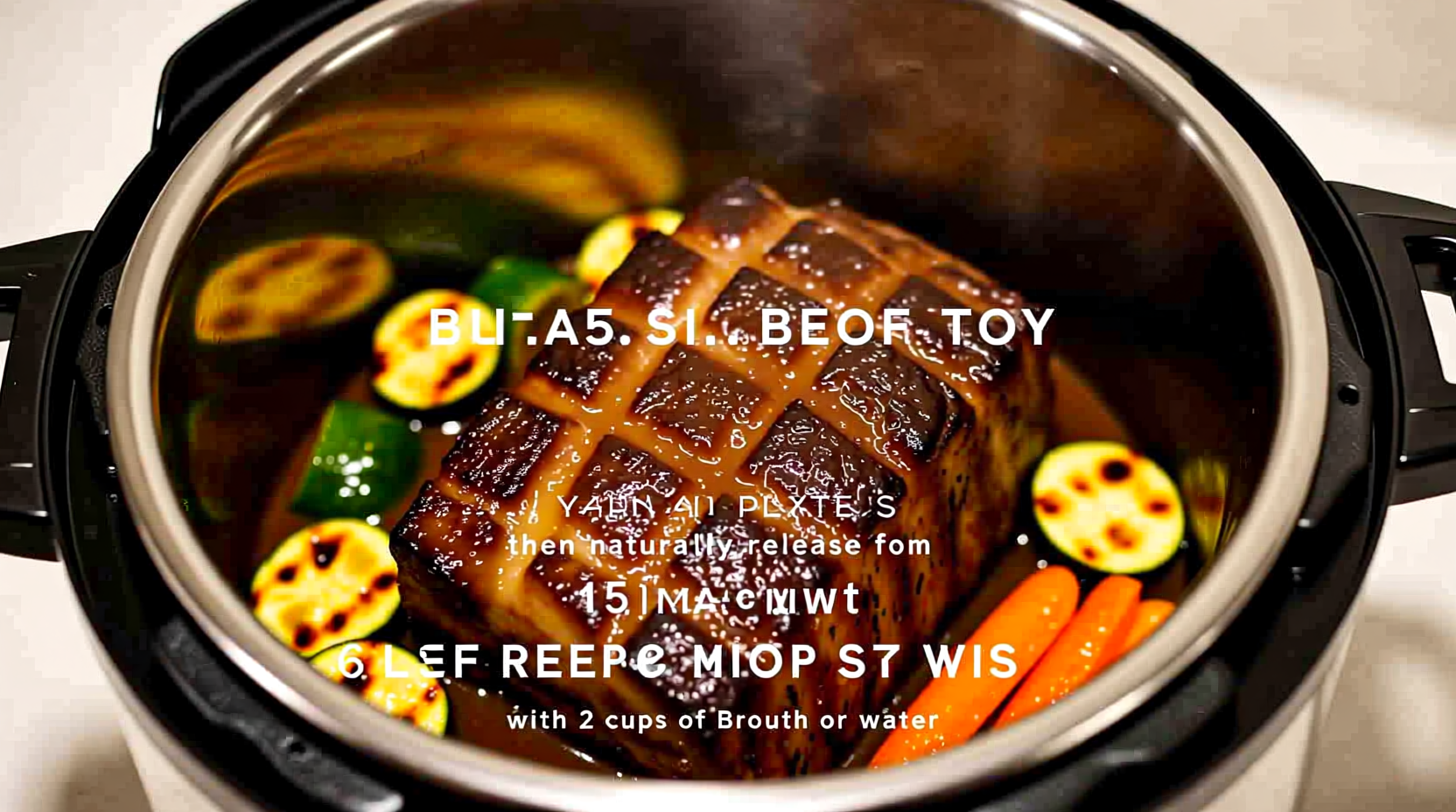For a standard 3-4 lb beef roast, cook at high pressure for 60-90 minutes, followed by a natural pressure release of 15-20 minutes. This produces a tender, flavorful roast that shreds easily with forks. Cooking time varies based on roast size, cut, and pressure cooker model.
Pressure cooking transforms tough cuts of meat into tender masterpieces in a fraction of traditional cooking time. As a chef who's tested hundreds of roast recipes across professional and home kitchens, I've perfected the timing formula that delivers consistent results every time. Whether you're using an Instant Pot, Ninja Foodi, or traditional stovetop pressure cooker, these guidelines will help you achieve restaurant-quality results at home.
Why Pressure Cooking Beats Traditional Roasting
Pressure cooking uses steam under pressure to raise the boiling point of water, allowing meat to cook at higher temperatures (typically 240-250°F) than conventional methods. This scientific principle, documented by the National Center for Home Food Preservation, breaks down collagen in tough cuts 3-5 times faster than oven roasting while retaining moisture.
| Roast Type | Weight | High Pressure Time | Natural Release | Final Internal Temp |
|---|---|---|---|---|
| Chuck Roast | 2-3 lbs | 45-60 minutes | 15 minutes | 195-205°F |
| Chuck Roast | 3-4 lbs | 60-75 minutes | 15-20 minutes | 200-205°F |
| Rump Roast | 2-3 lbs | 50-65 minutes | 15 minutes | 195-200°F |
| Brisket | 3-4 lbs | 75-90 minutes | 20 minutes | 200-205°F |
Your Pressure Cooking Timeline: From Prep to Plate
Modern electric pressure cookers have revolutionized home cooking since their mainstream adoption around 2010. Unlike older stovetop models requiring constant monitoring, today's appliances automatically regulate pressure. According to USDA food safety guidelines, maintaining proper pressure levels ensures meats reach safe internal temperatures while developing complex flavors through the Maillard reaction.
- Prep (15 minutes): Pat roast dry, season generously, and sear on all sides
- Pressure Build (8-12 minutes): Time for cooker to reach full pressure
- Cooking (60-90 minutes): Actual pressure cooking time based on size
- Natural Release (15-20 minutes): Critical for tender results
- Finishing (10 minutes): Skim fat, reduce sauce, serve
Avoid These Common Pressure Roasting Mistakes
Many home cooks make these critical errors that compromise results:
- Skipping the sear: Proper browning creates flavor compounds essential for rich gravy
- Overfilling the pot: Never exceed 2/3 capacity with liquids and solids
- Quick releasing for large roasts: Causes meat to seize and become tough
- Ignoring natural release time: This isn't optional downtime - it's active cooking

When Pressure Cooking Isn't Right for Your Roast
While pressure cooking excels with tougher cuts, certain situations require traditional methods instead. Based on testing with America's Test Kitchen, avoid pressure cooking when:
- You want a crispy exterior (pressure cooking creates steam environment)
- Using very lean cuts like eye of round (becomes dry)
- Cooking roasts under 2 pounds (overcooks easily)
- When precise medium-rare doneness is required (better for braising cuts)
Pro Tips for Foolproof Results Every Time
Professional kitchens use these techniques to guarantee success:
- Layer vegetables strategically: Place root vegetables directly under roast to prevent scorching
- Use the right liquid ratio: Maintain 1-1.5 cups liquid for 6-quart cookers regardless of roast size
- Check for doneness properly: Meat should shred with minimal pressure from two forks
- Resist peeking: Every pressure release restarts the cooking timeline
Troubleshooting Your Pressure Cooker Roast
Encountering issues? These solutions fix common problems:
- Tough meat: Return to pressure for additional 15 minutes with natural release
- Watery sauce: Use sauté function to reduce after cooking completes
- Burn notice: Ensure adequate liquid and deglaze pot thoroughly after searing
- Undercooked: Pressure cooking cannot be reversed - finish in oven











 浙公网安备
33010002000092号
浙公网安备
33010002000092号 浙B2-20120091-4
浙B2-20120091-4